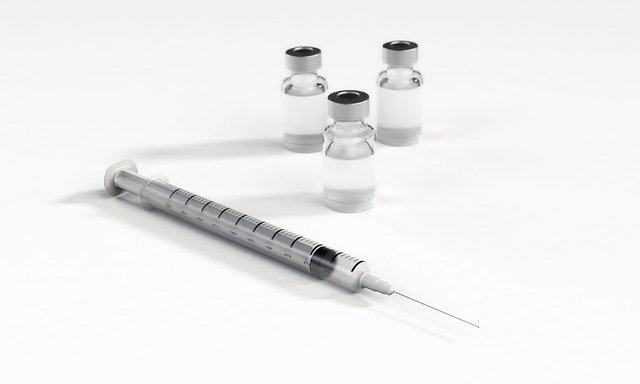
Omega Healthcare Investors (NYSE: OHI) was able to collect “virtually all” of its contractual rent for the first quarter, CEO Taylor Pickett said on the real estate investment trust’s first-quarter earnings call.
However, he added that without more government aid, many long-term care operators are likely to feel the effects of the costs stemming from COVID-19 this year.
“With no more funding, I think you see that stress start to hit operators in the back half of the year,” Pickett said.
Omega reported net income for the first quarter of $164.37 million, or 69 cents per share, compared with net income of $92.28 million, or 40 cents per share, in Q1 2020.
For the industry as a whole, some of COVID-19-related distress might arise even earlier than late 2021, but Pickett pointed out that many of Omega’s operators are still fairly strong on liquidity, given that they have paid their rent through April.
He and other executives were united in praising the various funding streams available to nursing homes from federal and state governments, ranging from increases in the federal medical assistance percentage (FMAP) passed early in the pandemic to the Provider Relief Fund created by the CARES Act.
Some of that funding is still flowing. There is about $24.5 billion left in the Provider Relief Fund (PRF), and rural providers received an allocation of $8.5 billion with the March 11 American Rescue Act, said Megan Krull, senior vice president of operations at Omega.
Still, Pickett noted in his prepared remarks that provider funding requests are likely to exceed the PRF total.
“While it is likely that SNFs and [assisted living facilities] will see some funds out of these remaining amounts, our operators are really looking to their states for new or increased stimulus, given the substantial amount of funding to states via the American Rescue Act,” Krull said on the call. “This would be in addition to or as a continuation of FMAP increases previously allocated by states to SNFs.”
The “vast majority of states” have been willing to be supportive of the long-term care industry, Omega executives said, calling out Michigan, Texas and California in particular. Meanwhile, Florida is the one place Omega has a significant presence “where there hasn’t been a lot of state support to date,” they noted.
Krull also pointed to a recent update from the Centers for Medicare & Medicaid Services (CMS) as another bright spot for operators: Based on guidance from the Centers for Disease Control and Prevention (CDC) that vaccinated nursing home staff are no longer required to be routinely tested for COVID-19.
“Removing the regular requirement to test already vaccinated employees, unless symptomatic or during an outbreak, will go a long way in reducing the cost burden associated therewith,” she pointed out.
Occupancy Showing Signs of Growth
Krull also pointed to the relaxed visitation restrictions as a promising sign for operators, since the move will alleviate the concerns of family members who might have considered admitting a loved one to long-term care, were it not for COVID-19 and restrictions on visits.
But it is not a cure-all for the occupancy issues the long-term care field is facing, she cautioned.
“While the height of the infection battle may be somewhat behind us, and despite these welcome revised CDC recommendations, the industry is still faced with what will likely be a long, drawn-out recovery,” Krull said. “Census will take time to rebuild and reduction in expenses will be gradual over time, all while the ability to scale in place will be reduced with far less COVID cases.”
Omega’s operating portfolio includes 954 facilities with more than 96,000 beds and 73 third-party operators, and cumulative occupancy for its core portfolio went from 84% in January 2020 to about 75% in fall of last year, Omega chief operating officer Dan Booth said. That fell even further to 73.3% in December 2020 and to 72.3% in January this year.
Some signs of recovery emerged in February, with cumulative occupancy coming in at 72.6%, and again in March, at 73.1%.
“Based upon what Omega has received in terms of occupancy reporting for April to date, occupancy has continued to improve, averaging approximately 73.4%,” Booth said. “We’re cautiously optimistic that the rollout of vaccines, which began in late December of 2020, and continued in earnest throughout the first quarter of 2021, will provide a much needed catalyst for improving occupancy statistics as infection rates continue to decline and visitation restriction continue to ease.”
Based on operators representing more than 90% of facilities reporting, the resident vaccination rate was about 81%, while the staff rate came in at about 49%, Pickett said. That’s compared with 69% and 36% for residents and staff respectively in the fourth quarter of 2020.
But as promising as both the visitation and testing changes are, and as hopeful as the vaccination statistics are, he cautioned that the future around a sustainable recovery is still murky.
“Looking forward, the key to our industry recovery is the return of occupancy to pre-pandemic levels,” Pickett said. “Although we have seen occupancy stabilized and increased slightly as vaccines have rolled out is not clear that the pace of occupancy recovery will be sufficient to avoid industry-level cash flow issues.”
"term" - Google News
May 05, 2021 at 01:58AM
https://ift.tt/2RmsyYU
Omega: Long-Term Care Occupancy Improving with Vaccines – But Maybe Not Fast Enough - Skilled Nursing News
"term" - Google News
https://ift.tt/35lXs52
https://ift.tt/2L1ho5r
Bagikan Berita Ini

















0 Response to "Omega: Long-Term Care Occupancy Improving with Vaccines – But Maybe Not Fast Enough - Skilled Nursing News"
Post a Comment